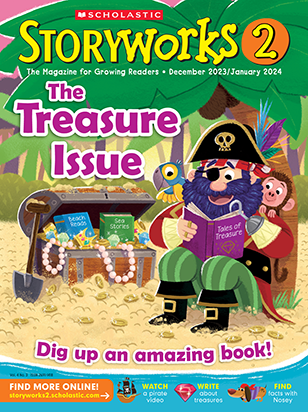Imagine you are writing a story. You make a mistake. Oops! You get your eraser. Where did erasers come from?

The History of Erasers
Learning Objective: Students will follow the sequence of events as they learn about the history of erasers.
Bread Erasers
The first erasers were different from erasers today. You could eat them!
Four hundred years ago, people used big breadcrumbs as erasers. They rubbed crumbs from old, stale bread on paper. That erased pencil marks.
Rubber Erasers
Erasers were about to change. In 1770, a man in England was drawing. He made a mistake.
He tried erasing it with a piece of rubber. The rubber worked better than breadcrumbs. He started selling rubber erasers.
Erasers on Pencils
Then, erasers changed again. In 1858, an inventor glued a rubber eraser to the end of a pencil. Now, people could write and erase with the same tool.
Erasers Today
Today, erasers come in a variety of colors and shapes. There are so many different kinds!
There are big erasers and tiny erasers. There are erasers shaped like animals and food.
smells like grapes
Some erasers even glow in the dark. Erasers can smell like strawberries, chocolate, bubble gum, and more.
Next time you use an eraser, be glad it’s not made of old bread!
Eraser Timeline
1600s: Breadcrumb erasers
1770: Rubber erasers
1858: Erasers on pencils
2025: So many fun erasers!
Implementation
- Small group; whole group; independent reading
1. Use the Before-Reading Resources
- Play the Vocabulary Slideshow (5 minutes)
Help students become familiar with the vocabulary words they will see in the article.
Help students become familiar with the vocabulary words they will see in the article.
2. Read the Article
Reading Focus: Sequencing (20 minutes)
- Ask students to pay attention to sequencing words such as “first,” “then,” and “today” in the article. These words tell them the order of events.
- Point out the bar on the right side of the page. Do students know what this is? Hint: The headline tells you. (It’s a timeline.)
- Explain that a timeline shows the order in which things happened. You can see how long ago each thing happened on the arrow.
3. After-Reading Skills Practice
(All pages below can be printed from our website.)
- Erasers Then and Now: (15 minutes)
Students will draw and write about the sequence of events in the history of erasers.
You can use these skills pages to practice other skills. (15 minutes each)
- Quiz: Comprehension check
- Nonfiction Text Feature Hunt: Identify nonfiction text features in the article.
